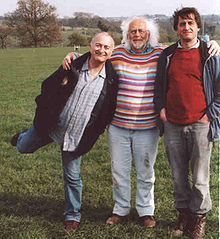After moving house and finally getting the broadband reconnected, I managed to update my blog. During my enforced break from blogging among the sea of cardboard boxes some archaeological news have reached us. On one hand the University of Leicester is to continue the study of the Greyfriars in order to study some other graves under the car park and on the other a Durham student has found a head of a statue from a Roman shrine. However, the biggest news during the last two weeks has been the demise of Mick Aston.
I did meet Mick Aston personally several times at Bristol when I was studying for my MA in Landscape Archaeology. When I arrived to England, I was totally ignorant of Time Team, since it had not travelled to the Continent, yet. I was wondering the knowledge of geophysics my fellow English students seemed to have. I only understood after viewing the programme.
Since I did not take part into Time Team, I only met Mick in some departmental functions and trips that were part of my taught course. We visited the Shapwick village, the site of the project Mick ran for decades, where he personally explained the history of the project and the resulting depth of knowledge of that village.
He was a gentle man, liked by the PhD students who helped him in his media research. His wild hair and colourful jumpers seemed to be part of his role, but also implicated his jovial and relaxed nature, which was not some added 'pepper'. We all witnessed how Time Time slowly withered away. It was a pity his last year was filled with some controversy and ill health. However, his legacy in British landscape archaeology will live on.
If you have not read Mick Aston's famous text books, Landscape Archaeology: An Introduction to Fieldwork Techniques on Post-Roman Landscapes (with Trevor Rowley) from 1974 and Interpreting the Landscape: Landscape Archaeology in Local Studies from 1985, you can introduce yourself to his speciality by reading this short treatise on the Medieval landscape in Somerset.

No comments:
Post a Comment